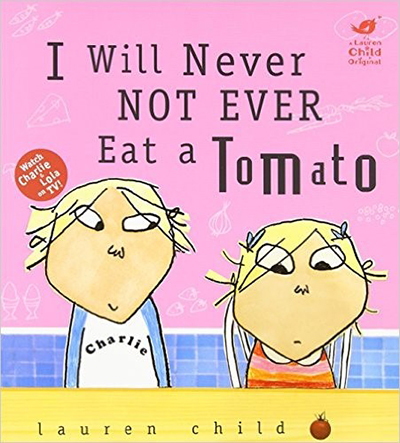Plant science at the dinner table: Tomatoes
Tomatoes are at the top of the list for summertime favorites. Nothing tastes as good as a tomato right off the vine.

With backyard gardens and farmers’ markets brimming with freshly picked produce, it is the perfect time to try new fruits and vegetables and make summer a ripe and tasty time for learning. The dinner table – or better yet, picnic table – is a perfect place for a little plant science. Michigan State University Extension reminds you that teaching kids a little plant science – learning more about the foods we eat, how they grow and where they come from – can make for a great summertime activity for young and old.
Tomatoes are at the top of the list for summertime favorites. Nothing tastes as good as a tomato right off the vine. Here are a few fun facts about tomatoes:
- Tomatoes originally came from Peru; the Aztec name translated to plump thing with a navel.
- Tomatoes were first brought to Europe in the mid-1500s.
- The scientific name for tomato is Lycopersicon. Lycopersicum means wolf peach.
- People used to think tomatoes were poisonous because they are a close relative of the deadly nightshade plant.
- Tomatoes increase in weight as they ripen, even after harvesting.
- The first tomatoes in Europe were yellow. The Italian word for tomato is pomodoro and translates to golden apple.
- A tomato is a fruit. Fruits are the edible part of the plant that contains seeds.
- Tomato seedlings have been grown in space.
- There are over 10,000 varieties of tomato that come in a variety of colors, including pink, purple, black, yellow and white.
Consuming fresh or processed tomatoes has a multitude of health benefits. Here are a few:
- Tomatoes are low in calories and are an excellent source of antioxidants, dietary fiber, minerals and vitamins.
- Tomatoes are a good source of Vitamin C. Consuming foods rich in Vitamin C helps the body develop resistance against infectious agents and scavenge harmful free radicals.
- Fresh tomatoes are very rich in potassium. Potassium is an important component of cell and body fluids that helps control our heart rate and high blood pressure, caused by sodium.
- Tomatoes carry average levels of vital B-complex vitamins such as folates, thiamin, niacin and riboflavin, as well as some essential minerals like iron, calcium and manganese.
- The antioxidants present in tomatoes are scientifically found to be protective against many cancers, including colon, prostate, breast, endometrial, lung and pancreatic tumors.
- Tomatoes are the richest source of lycopene (the red varieties have the most lycopene), which is important for the health of the prostate gland in men. Lycopene may also offer some defense against skin cancer.
- Zeaxanthin is another flavonoid compound found abundantly in tomatoes. Zeaxanthin helps protect eyes from age-related macular degeneration in the elderly by filtering harmful ultraviolet rays.
 If you have a picky eater in the family that doesn't like trying new foods, read “I Will Never Not Ever Eat a Tomato” by Lauren Child. This book is fun for kids of all ages and is one of my all-time favorite books about vegetables. In this book, Lola is a very fussy eater. There are many things Lola won’t eat, especially tomatoes. Lola’s brother, Charlie, has a great imagination and encourages Lola to eat all sorts of foods she is determined not to eat. She won’t eat her carrots until Charlie reveals they’re orange twiglets from Jupiter. She won’t eat her mashed potatoes until Charlie explains they’re cloud fluff from the pointiest peak of Mount Fuji. This is a really creative and funny book for children.
If you have a picky eater in the family that doesn't like trying new foods, read “I Will Never Not Ever Eat a Tomato” by Lauren Child. This book is fun for kids of all ages and is one of my all-time favorite books about vegetables. In this book, Lola is a very fussy eater. There are many things Lola won’t eat, especially tomatoes. Lola’s brother, Charlie, has a great imagination and encourages Lola to eat all sorts of foods she is determined not to eat. She won’t eat her carrots until Charlie reveals they’re orange twiglets from Jupiter. She won’t eat her mashed potatoes until Charlie explains they’re cloud fluff from the pointiest peak of Mount Fuji. This is a really creative and funny book for children.
If you want to grow your own juicy, Michigan tomatoes, you can learn more at Michigan Fresh: Growing Tomatoes from MSU Extension.



 Print
Print Email
Email









